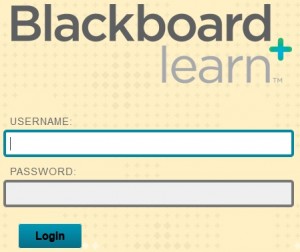This week’s internship class was suppose to go over learning how to use Blackboard as future senior consultants. Unfortunately I was at at an archery tournament that weekend and missed the class. Going on what I know so far, as senior consultants the ability to use blackboard is critical in setting up individual sections for each remote site. On the TLT blackboard page, there are different sub-categories for each remote site and important links. Site managers are in charge of maintaining their SINC site page in terms of opening/closing procedures, paper, toner/drum fill-outs, and other site procedures. I think that it’s very important for senior consultants to know how to properly format their SINC site blackboard pages because new/returning consultants depend on those pages for important information. Looking at what the other interns did during the class, I believe they had a temporary “blackboard class” created where they could edit and add different functions to the blackboard page. Noted as the Testing Ground Spring 2015, interns created announcements, uploaded pictures, created polls, and just in general played around with the page.
In other news, this week marks the continuation of shadowing Help Desk and Site Managers. As usual, the first thing that is done as Site Managers is checking if all assigned consultants are working at their SINC sites. If there is a no-show or a consultant arrives later than 15 minutes to their shift, then a no-show email is required to be sent to rose/pam in regards to the consultant in question. Luckily during that week their were no no-shows during my shadowing hours and everyone was present for work. While I was shadowing Site Managers in the main library, we went over the features of the DoIT webpage and the services that are offered by Stony Brook. For example, Charles told me that whenever working at TLL or even in the main library, it’s a good idea to have a page open to the software catalog in case users have a question about what SINC sites offer certain programs and which ones they can receive for free (Office 365). Another good page to have open while working is the status page to keep track of what services are operational ex. Blackboard, Clickers, Google Apps, WolfieNet, and others. If a student has a question whether or not a service is working, you can quickly check on the consultant computer for the answer. I familiarized myself with the features Google Apps offers such as now unlimited storage through Google Drive.
During my shadowing hours with Jenney for Help Desk we went over important questions that may be asked once a student who has graduated is trying to use some of the features that Stony Brook offers. For example after a student’s last day of classes of his or her last year, he or she’s NetID is disabled after 200 days. This is an important piece of information for students because NetID is used for almost everything on campus. Programs such as E-portfolio, lynda.com, print from anywhere, Blackboard, and Stony Brook gmail, all rely on NetID to log in. However even after students graduate, they can gain access to their E-portfolio account if they sign up for an alumni pass and pay a small fee. If students want to transfer everything they have in their Stony Brook Google account to a personal account, they can use a program called Thunderbird that will help make the transition easy.
